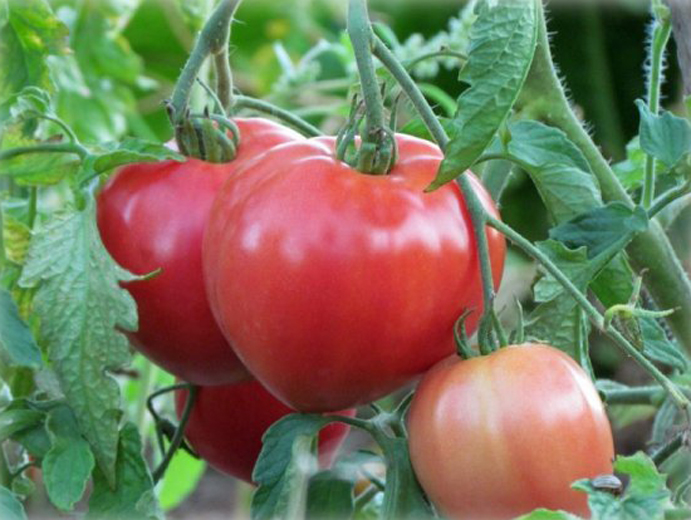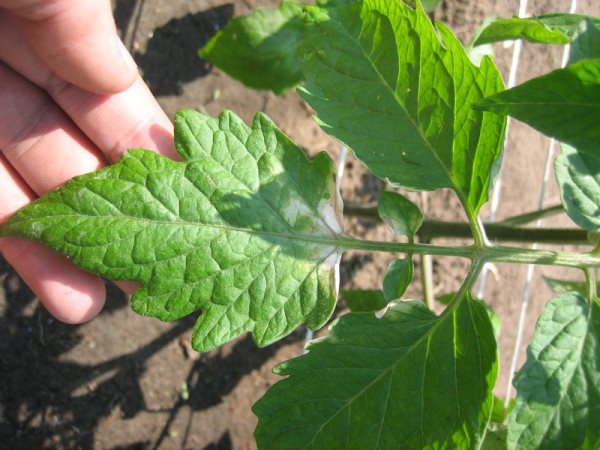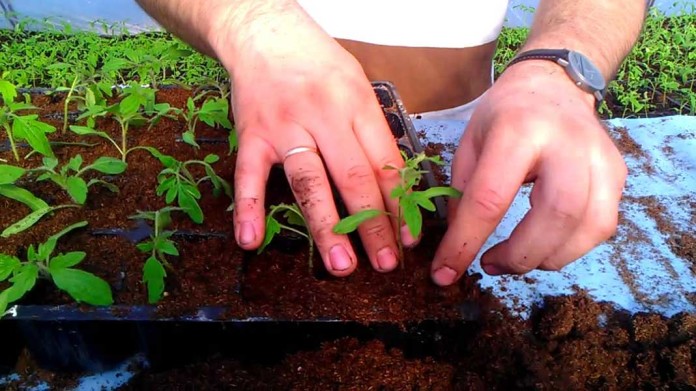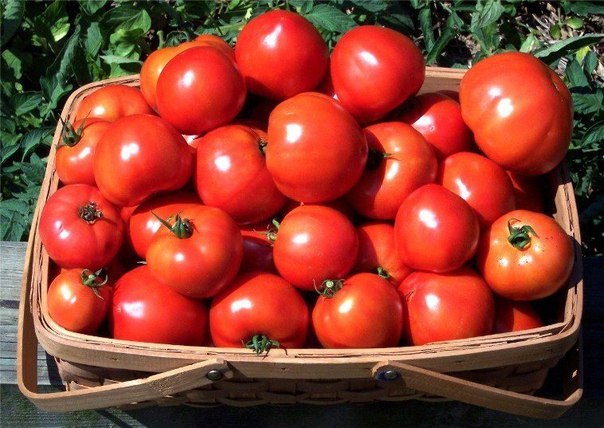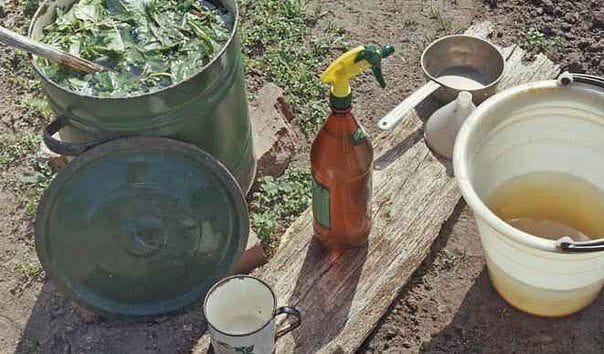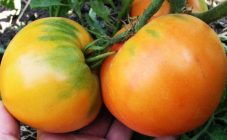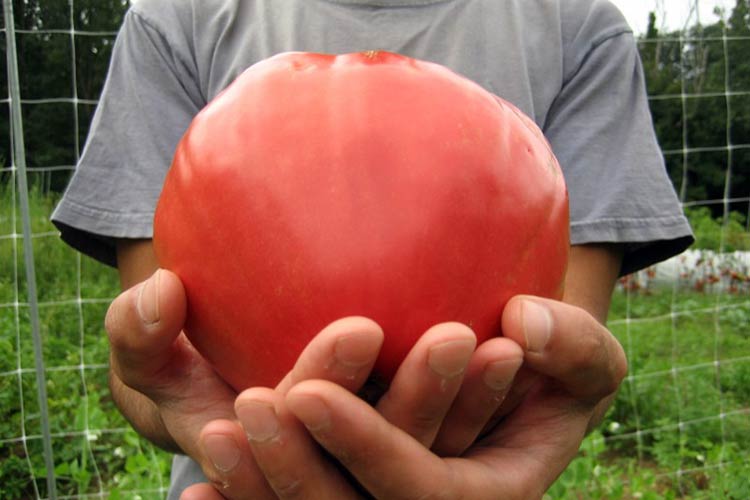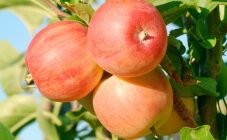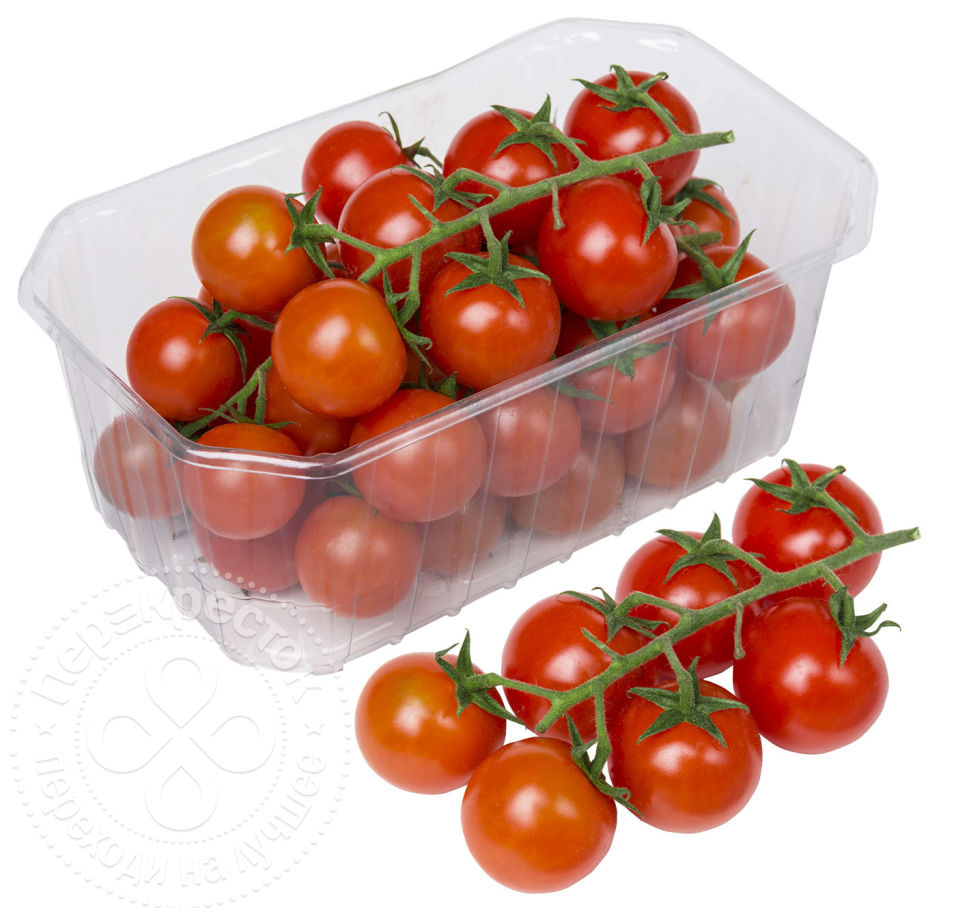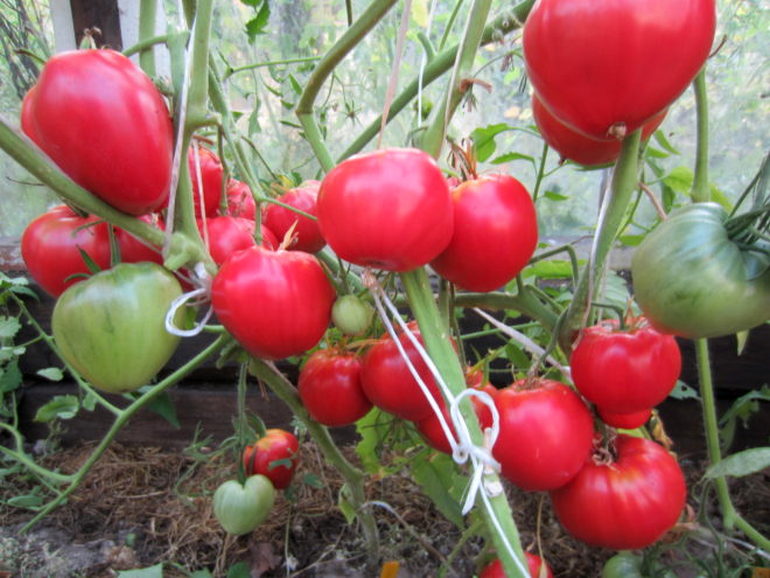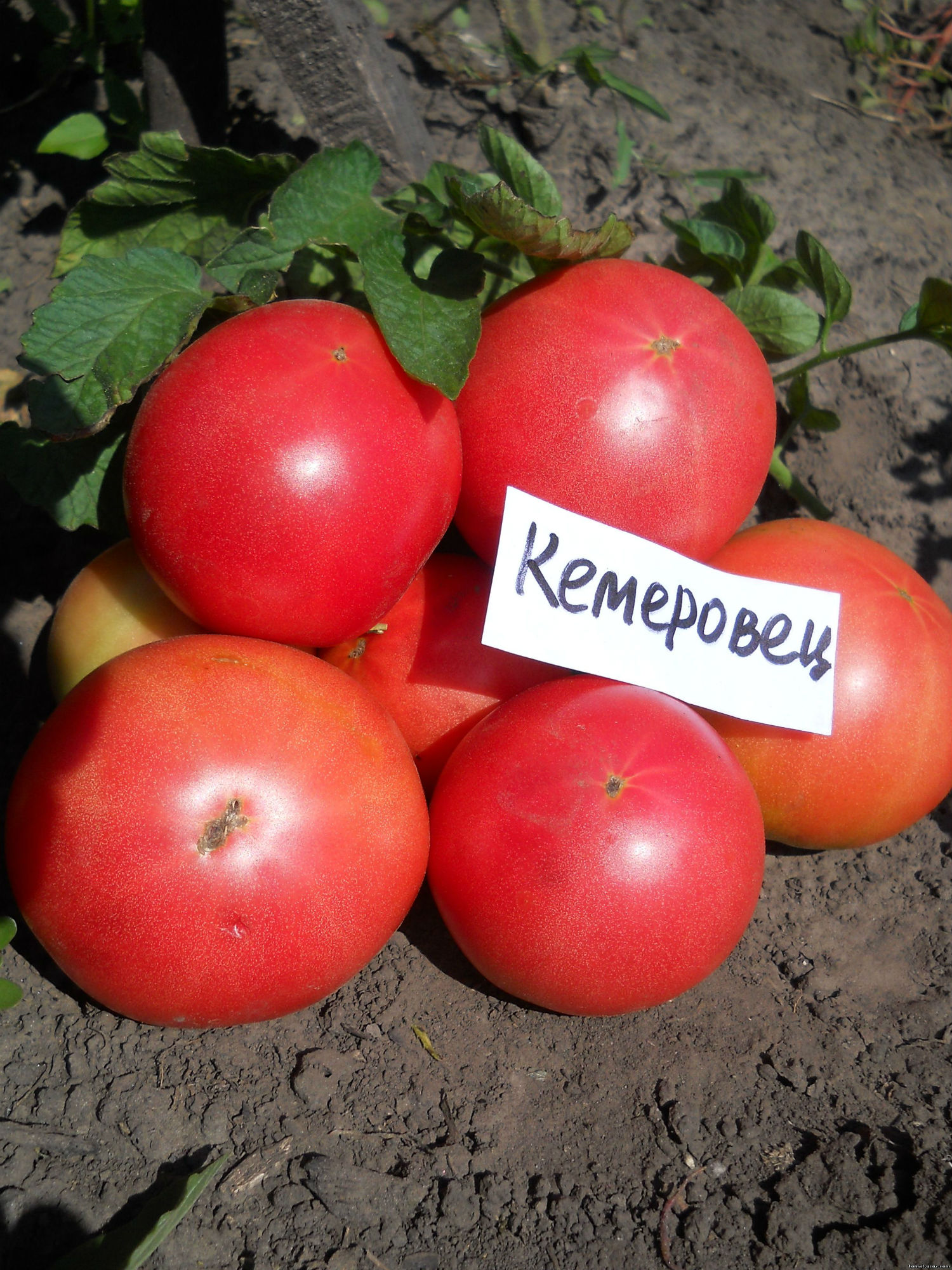Content:
Among the useful crops grown by all gardeners are tomatoes. Tomato Pink Heart is planted mainly by owners of personal plots and summer cottages for harvesting and so that there are tasty fruits on the table. Due to the low yield and difficult care, the variety did not take root on farms. To decide whether to grow or not to grow, and if to grow, then how much and for what, the characteristics and description of the variety will help on the Pink Heart tomato.
History of appearance
Pink-fruited tomatoes are loved for their balanced taste, tender pulp, and beautiful appearance. Their selection does not stop, and new varieties of tomatoes appear. Variety Pink Heart - a variety and hybrid of the Bull Heart, was bred in 2002 by Russian breeders. The next year, it was entered into the State Register with the recommendation of cultivation in open ground in the southern regions, in greenhouses and with shelter in the middle lane. The agrofirm Poisk became the originator of the variety.
Description of the variety
The variety belongs to medium early, begins to bear fruit in 100-115 days after planting seedlings in the ground.
Yield
On average, 2.5-3 kg of tomato are removed from one bush. With proper care and adherence to planting density (up to 3 bushes per square meter), you can get up to 9 kg of harvest. For such a tall plant, this is a very modest figure.
Fruit
The variety is characterized by heart-shaped fruits. As they ripen, they turn pinkish, while mature ones have a bright pink color. The largest fruits are the first, their weight reaches 450 g. After them, the smaller ones ripen - weighing up to 300 g.
The fruits are juicy, have a characteristic tomato aroma, their inside is fleshy (pulp of medium density) with a sweet taste, does not crack during ripening. Delicious salads are prepared from fresh fruits, from processed ones - lecho, mashed potatoes, juices with a balanced taste are obtained.
A peculiarity of the variety - because of the delicate skin, tomatoes do not withstand transportation, which has become a limitation for growing them on an industrial scale.
Bush
Tomato bush Pink heart, as an indeterminate variety, stretches high up. Its height can be up to 2 m or more. The usual height of the bush in the beds in the open field is up to 180 cm. The growth of the stems continues after the fruit sets, and the thick stems need to be tied up.
The leaves of the bush are large, carved, dark green.
Zoning
The Rose Heart variety for cultivation is not suitable for the entire territory of Russia. For growing in open ground in terms of climate, it is suitable for the southern regions with stable warm, sunny weather. In the middle zone of the country, the bushes need to be covered or grown in a greenhouse. It will be possible to grow varietal tomatoes in the northern regions only in greenhouse conditions.
Growing
The variety is sensitive to growing conditions: temperature, soil composition, top dressing.The bush must be tied up to prevent crop losses due to broken stems.
Growing seedlings
The culture is grown in seedlings. In March, seeds are sown in prepared containers for seedlings or wooden boxes with soil, without deepening them, but only sprinkling them with a thin layer of earth. The containers are transferred to a room with a constant room temperature of +25 ° C and above.
When the first shoots appear, containers with seedlings should be transferred to a cooler, well-lit place. Alternatively, it can be a windowsill.
When 2 leaves appear on the sprouted sprout, the seedlings dive.
Young plants are hardened 10 days before planting seedlings in a greenhouse or open ground.
Landing
It is possible to plant seedlings in a greenhouse or soil no earlier than 55-60 days after germination. It should have 6-7 leaves and at least 1 inflorescence, and the outside air temperature or in the greenhouse should not fall below + 15 ° C.
When planting, you need to maintain a distance of 30 cm or more between neighboring plants or follow the scheme: no more than 3 bushes per 1 sq. m.
Watering
A lot does not mean good at watering seedlings. Due to excess moisture, the roots of the bush are weakened, and the development of the plant is suspended. In addition, in waterlogged soil, the development of fungal microorganisms begins, against which a young, immature plant cannot resist.
On average, one bush is enough to provide watering 2 times a week.
Top dressing and care
The plant needs to be fed regularly to ensure normal development. For tomatoes, a good top dressing is universal mineral fertilizers, organic.
A rapidly growing bush with fragile shoots needs a garter. When predicting a cold snap, the plant must be protected from low temperatures with spunbond or other covering material. Such a shelter can also be used in heavy rains to prevent waterlogging of the soil under the bushes.
To increase the yield
It is possible to increase the yield of a tomato bush by forming its crown during the growth of the plant. Tall bushes of the Pink Heart are suitable for growing in 1 or 2 stems.
Formation into 1 stem is the most simple: all stepchildren are removed on the main stem of the plant.
It is possible to form a bush into 2 stems when a shoot is formed above the first inflorescence that appears. After 2 flowering brushes appear on the bush, pinching is done, the result of which is to restrain the growth of the plant upward, and all stepsons are removed.
On bushes formed into 2 stems, the fruits grow smaller, and the bush itself requires more space than with 1 stem.
Disease resistance
Tomatoes Pink Heart are resistant to fungal diseases. To prevent other "tomato" diseases, it is necessary to observe the irrigation regime, prevent waterlogging of the soil, remove weeds in time and apply additional fertilizing.
If the plant is infected with aphids, which is very rare, you can use the preparations "Bison", "Strela".
Pros and cons of the variety
The benefits of the Pink Heart tomato include:
- abundance of ovary, regardless of the weather;
- amicable maturation;
- high resistance to diseases and pests;
- tasty fruits, which, moreover, do not emit a lot of juice when cutting;
- tomato heart looks beautiful in blanks.
If the fruits are large and do not fit in the jar, they are cut and the original shape is lost. But the heart shape remains with the barrel pickling of tomatoes.
The disadvantages are:
- ripe fruits are poorly stored and cannot stand transportation;
- due to the height of the bush, the culture is poorly adapted for growing in open ground;
- low productivity;
- exacting care;
- climatic restrictions for cultivation.
The main drawback of the variety, which makes it difficult to grow the Pink Heart for industrial processing, is associated with delicate fruits. They do not tolerate storage and transportation. And the yield does not make the variety promising. But when growing a tomato in a country house or a personal plot, these disadvantages recede. The advantages come to the fore with delicious fruits that can be eaten like apples, or made with salads, used for homemade preparations. In this case, low yields are also uncritical. If the climate permits, this variety is yours.
